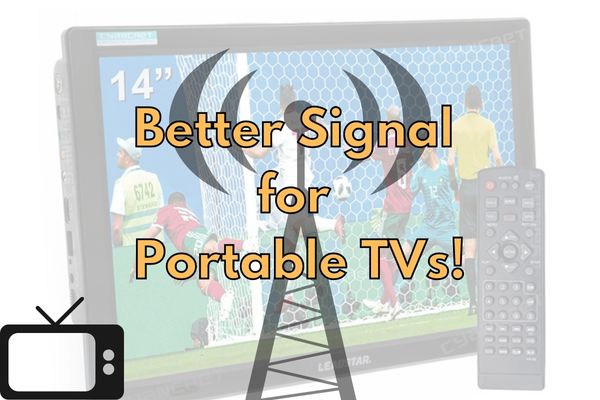Are you having trouble accessing the antenna channels on your Hisense TV?
Don’t worry, I’m here to help.
As a television technician with years of experience, I know all the tricks for getting access to those hard-to-reach antennas.
In this article, I’ll explain exactly how to scan for antenna channels on your Hisense TV so that you can watch your favorite shows and stay connected with friends and family.
Let me start by reassuring you – setting up an antenna connection is not as complicated as it might seem! With just a few simple steps, you can easily find all the available channel options in no time at all.
Plus, scanning for antenna channels helps ensure that you’re getting the best reception possible.
So if you’re looking to get more out of your Hisense TV, read on and learn how to do a proper antenna scan today!
Finally, when it comes to home entertainment systems, there’s nothing quite like having reliable access to all the latest news and shows.
And being able to quickly and easily scan for antenna channels will give you peace of mind knowing that whatever happens in the world – whether it’s sports highlights or breaking news updates – you won’t miss out on any important information.
Thanks to this guide, you’ll be well equipped with everything you need in order to make sure your Hisense TV never stops delivering great content right into your living room!
Requirements For Scanning
To properly scan for antenna channels on a Hisense TV, there are basic requirements to keep in mind.
Firstly, one must be sure the connection from their antenna is compatible with the television.
To ensure compatibility, it’s best to consult the manufacturer or research online about the technical specifications of both devices.
Next, it’s important to understand how to interpret signals that come through an antenna and into a television – this includes knowing what type of signal you’re receiving as well as which frequencies can pick up certain types of content. This will help narrow down which channels should appear after scanning.
Finally, setting up a proper scanning environment is essential; making sure your antenna is placed in an area free of interference and obstructions while also ensuring its connected securely to the tv itself.
With these fundamental steps taken care of, one is ready to move onto connecting their antenna to the tv.
Connecting The Antenna To The Tv
Connecting the antenna to a Hisense TV is an easy task that anyone can do. To start, you’ll need to gather all necessary components: the antenna, coaxial cable(s), and any other connecting cables or adapters that may be required based on your setup.
Then, connect one end of the coaxial cable into the back of the antenna, and then plug in the other end into either the “ANT” port or “RF IN” port on your Hisense TV – depending on which type of connection is available. If applicable, use additional connecting cables or adapters if needed.
Once everything is connected securely, it’s time to set up for scanning. Make sure you’ve double-checked each cable connection before proceeding ahead with this process.
Following these instructions closely will give you access to all possible channels available through your antenna tv connection!
Setting Up The Scanning Process
Getting started with scanning for antenna channels on your Hisense TV is easy. First, you’ll need to access the settings menu and select the “Antenna Setup” option.
Here, you’ll be able to enter details concerning your local area’s channel list. Once that’s done, selecting “Scanning Setup” should provide further options such as setting up a manual or automatic scan.
If you opt to go with an automatic scan, simply click ‘OK’ and let the TV do its thing!
If you want more control over which channels are found, then consider taking the manual route instead.
This will allow you to choose specific frequencies from within your area before starting the scan process.
It might take some trial-and-error here depending on your location but it can help ensure that only those channels accessible in your region appear onscreen when finished.
So there you have it – all set up and ready to start searching for available antenna channels! All that’s left now is interpreting the results of what has been found so far…
Interpreting The Results
Once you’ve completed the antenna scan on your Hisense TV, it’s time to interpret those results. In this section, I’ll show you how to understand what that data means and make sure you’re getting the best signal available.
- Start by identifying which channels are coming in clearly: Look for signals with at least a 70% signal strength reading or better. A lower number may be acceptable as long as it is higher than 50%.
- Clarify any overlap: If two different stations share the same channel number but have different call signs, note both of them down on your list so you can differentiate between them. This will help when setting up recording schedules later.
- Translate signal strength readings: Be aware that stronger isn’t always better – sometimes a weaker signal offers clearer picture quality because there is less interference from other frequencies. Use trial-and-error methods to find out which works best for each individual station you’re trying to receive.
Now that you know how to decipher your antenna scan results, it’s time to take action! With these tips in mind, you should now be able to fine tune your settings and get the most out of your Hisense TV viewing experience.
Conclusion
The process of scanning for antenna channels on a Hisense TV is now complete. With the right setup and proper tools, you can access local channels with ease.
It’s as simple as connecting an antenna to your device, setting up the scan parameters, then interpreting the results.
Now that I’ve walked you through this step-by-step guide, you should have no problem accessing free over-the-air broadcasts on any Hisense television set. And if at any point you get stuck or need help understanding something along the way, don’t hesitate to reach out — I’m here to make sure everything runs smoothly.
So go ahead and start enjoying all those great programs without worrying about expensive cable bills! With just a few clicks and some patience, you’ll be able to watch whatever content you desire in no time. Happy viewing!




